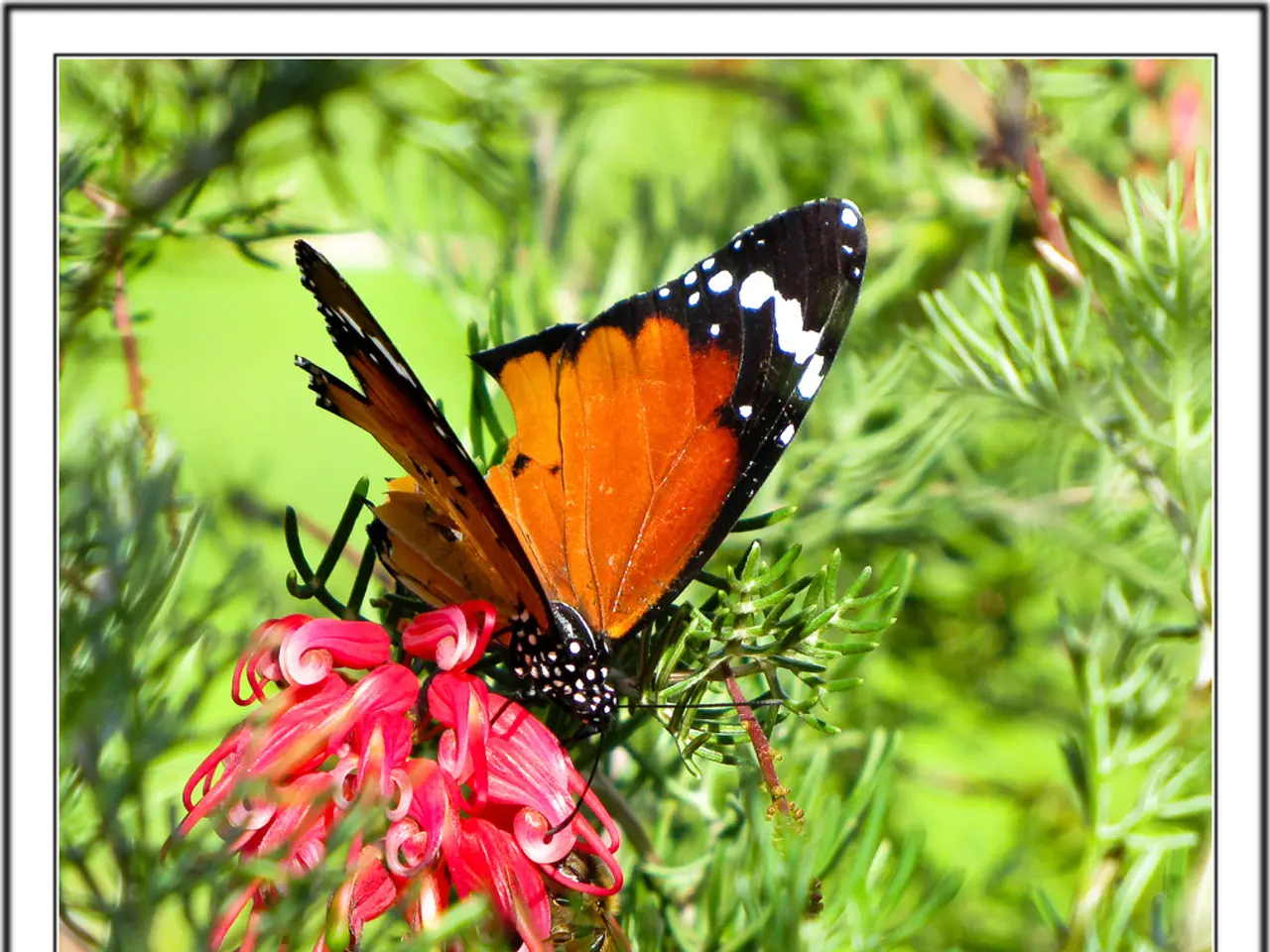Luring Butterflies into Your Backyard Haven
Creating a Butterfly-Friendly Garden: A Guide for Attracting and Supporting Butterflies
Butterflies, with their vibrant colours and delicate flight, add a touch of magic to any garden. To create a haven for these beautiful creatures, it's essential to address their fundamental needs at all life stages. Here's a guide on how to create a butterfly-friendly garden that provides food, shelter, safety, water, and a pesticide-free habitat.
The Basic Needs of Butterflies
Butterflies go through four life stages: egg, larva (caterpillar), chrysalis, and adult. To support each stage, provide appropriate habitat and resources. Caterpillars often require specific host plants, so plant these to feed larvae and encourage butterfly reproduction.
Plants Butterflies Love
Adult butterflies primarily feed on nectar. To attract them, plant a variety of nectar-rich flowers that bloom at different times for a continuous food supply. Include flowers of various heights, colours like pink, red, orange, white, yellow, and purple, often favoured by butterflies. Use native plants adapted to your region to better support local butterfly species and caterpillars. Examples include milkweed for monarchs, violets for regal fritillaries, and a broad range of nectar plants for species like the painted lady.
Feeding Caterpillars
Provide host plants specific to caterpillars of your local butterflies. For instance, monarch caterpillars eat milkweed, so planting milkweed supports their life cycle.
Providing Shelter and Safety
Butterflies and caterpillars need shelter for protection, egg-laying, pupation, and overwintering. Include brush piles, logs, undisturbed leaf litter, and shrubs/trees as windbreaks that create microhabitats and protect from predators and harsh weather. Avoid disturbing these shelters to encourage safe development.
Offering Alternative Foods
Besides nectar, butterflies also feed on rotting fruit, tree sap, and carrion. You can create butterfly bait stations by placing rotting fruit, sugar-based baits (e.g., mixtures of rotting fruit, molasses, white sugar, and yeast), or sap on rocks or dishes in your garden.
Providing Clean Drinking Water
Butterflies need water to stay hydrated and for "puddling," a behaviour mostly seen in males acquiring minerals. Create shallow water sources by placing water in shallow dishes filled with pebbles or birdbaths with textured sides so butterflies can safely land and drink.
Avoiding Pesticides
Avoid using chemical pesticides, as they are harmful to butterflies and caterpillars and reduce the availability of nectar and larval food plants. Pest control can be managed by encouraging natural predators and planting diverse, healthy plant communities that support beneficial insects.
In sum, a successful butterfly garden balances nectar plants for adults, host plants for caterpillars, safe places to shelter, alternative feeding options, clean water access, and a pesticide-free environment to sustain and attract butterflies throughout their life cycles.
Butterflies get vital nutrients from shallow puddles, so leaving a shallow dish of clean water can help them. Garden Phlox produces clusters of purple, red, or orange flowers that butterflies love. Butterflies are important pollinators in the natural world. Pentas, cosmos, lantana, petunias, and zinnias are annuals that provide a steady supply of nectar for butterflies. Butterflies need a safe place away from strong winds, rains, and excessive heat, such as a log pile in the corner of the yard.
By following these guidelines, you can create a beautiful, thriving garden that not only delights the senses but also supports these fascinating creatures and the ecosystem they inhabit.
- To support the home-and-garden lifestyle that is both visually appealing and beneficial for butterflies, consider planting a variety of flowers that cater to their dietary needs at all life stages, such as Garden Phlox, Pentas, cosmos, lantana, petunias, and zinnias.
- By providing a pesticide-free habitat, you not only create a safe and welcoming environment for butterflies and other pollinators but also contribute to maintaining a healthy, diverse home-and-garden ecosystem.




